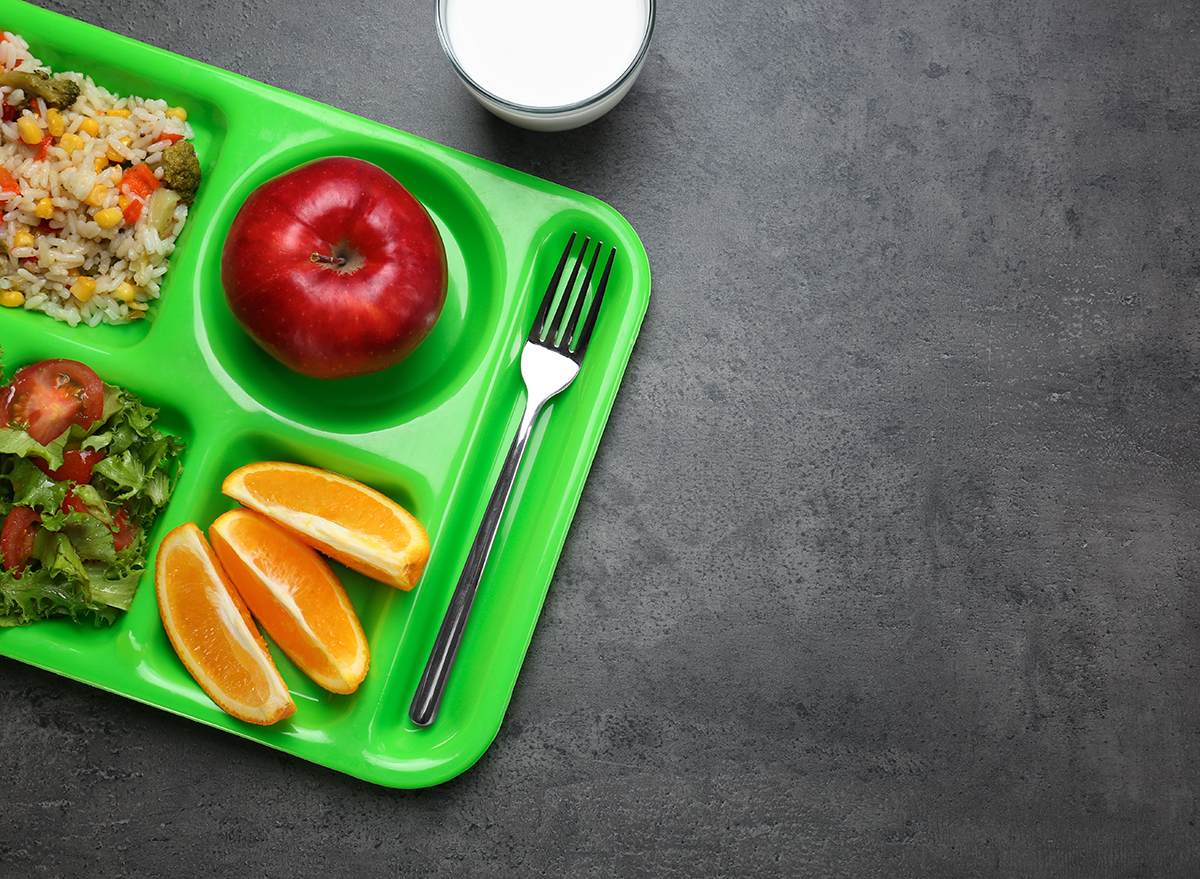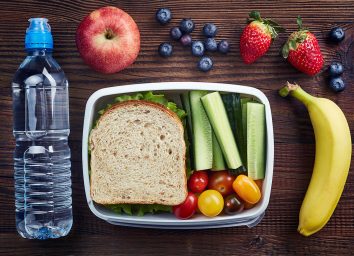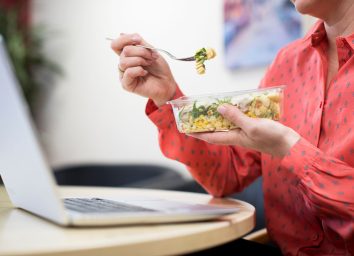School Lunch Debt in America: What It Is and How to Get and Offer Help

Imagine being in elementary school and not having the luxury of eating a hot lunch like the rest of your classmates all because of outstanding debt in your lunch account, or receiving a stamp on your hand that says "I need lunch money." For many children in the U.S., this is their present reality. Unfortunately, shaming that comes with school lunch debt plagues children and young adolescents everywhere in America. At the end of the 2017-18 school year, the School Nutrition Association said that 75 percent of school districts nationwide reported having unpaid student meal debt.
According to the USDA's Food Assistance Landscape 2018 annual report, roughly 29.7 million children participated in the National School Lunch Program each school day. It is a federally assisted meal program that provides breakfast and lunch for children at either a reduced price or for no charge at all, depending on income levels. The number of participants, though, is down one percent from last year and seven percent from 2011, when average school lunch program participation peaked at 31.8 million. Still, 43 percent of U.S. school districts report that the number of students without adequate school lunch funds increased last school year. The discrepancy between the number of students participating in the national school lunch program and those with insufficient funds is attributable to both income requirements and enrollment in the program. Without these two factors in check, school lunch debt begins to accumulate.
What is school lunch debt?
School lunch debt is unpaid meal charges that accrue in a student's lunch fund account. It can be detrimental to both the family and the school district because, in most districts, a child cannot be denied a meal at school—even with insufficient funds—and as a result, the school accumulates debt.
"What happens when a student is unable to pay for their meal? That's where the problem arises," says Diane Pratt-Heavner, spokesperson for the School Nutrition Association. "It becomes a problem not just for the meal program, but for the district as a whole because when the district has made attempts to collect the money and is not able to, they have to pay off that debt using school district funds."
School district funds are traditionally designed to cover educational costs, not meals.
The National School Lunch Program gives schools a set amount of money from the federal government to give to qualifying students. Debt that accumulates from students whose families do not qualify for free lunch—or for other reasons have not enrolled into the program—will not be alleviated by the federal government.
This is because of the Healthy Hunger-Free Kid Act of 2010, which asked the USDA in July 2017 to establish regulations to cover debt incurred by schools. One of the regulations enforced included the restriction of schools using federal funds to pay off any debt incurred from students with insufficient funds. It also required each school district to establish a policy on how they manage the issue.
A member from the USDA's Food and Nutrition Service wrote in an email, "[The] USDA gives local school districts discretion to develop their own meal charge policies based on their real-world experience managing the program."
The budget that the federal government allocates to schools for meal programs is tight as it is.
"They only get a little over $3.00 for every meal served to every student and that has to cover all of the costs, not just the food but all of the labor, equipment, and supplies, so there's not really funding available to cover that debt, even if they were allowed to use federal funds," says Pratt-Heavner.
If school district funds cannot cover the debt, the school then turns to charitable organizations for assistance.
How does this problem occur in the first place?
A child may not receive lunch at a reduced price or for free for a variety of reasons. For example, parents may not be informed about the options that are available to them. For a child to receive free and reduced-price lunches, parents have to fill out an application to see if they qualify. Parents also have to reapply annually to keep receiving coverage on school lunch funds.
Children who come from families with an annual income at or below 130 percent of the poverty level are eligible for free meals at school. For the 2019-20 school year, 130 percent of the poverty level is $33,475 for a family of four, according to SNA. Children from families who make an income that falls between 130 percent and 185 percent of the poverty level ($47,638 for a family of four) can receive lunch for a fraction of the cost. Under this program, the student only pays 30 cents for breakfast and 40 cents for lunch. For comparison, the average elementary school breakfast and lunch costs $1.46 and $2.48, respectively. However, sometimes the reduced lunch price still doesn't support families enough.
"There can be kids in that reduced-price category who struggle to pay that co-pay," says Pratt-Heavner. "We have seen some states take the step of trying to eliminate that co-pay for reduced-price kids for breakfast, some have even done that for lunch just because a lot of those families really are living on the margins."
There is another way that children can receive free or reduced-price lunch that does not require an application. In high poverty areas, where at least 40 percent of children in either the district or the school qualify for free and reduced meals, a federal program called the Community Eligibility Provision covers the cost of breakfast and lunch for each child, without consideration of parental income.
Of course, not every district qualifies for CEP, which makes enrollment in the National School Lunch program that much more important. Language barriers and even fear to complete the paperwork necessary for the application can also be reasons why kids who qualify aren't receiving the funds they need to cover their school meals.
Here's how you can get help if you are affected by school lunch debt.
"In terms of individual families struggling, we always encourage them to reach out to the school [district's] nutrition department because they're usually willing to work out a payment plan or try and connect the family with some other kind of assistance," says Pratt-Heavner.
She adds that the nutrition department can provide assistance in completing the application for the meal program and even connect the family to a charitable organization that could potentially cover the costs of any existing debt.
"There are a number of school districts that have worked with local non-profits or corporations to develop charitable funds to pay off lunch debt for families in need," she says. "The school district nutrition department or food service department would be the best place to reach out to get information."
What are some organizations that can help?
The School Lunch Fairy is one such charitable website that raises funds to set up emergency lunch funds at public schools nationwide, so instead of covering lunch debt, this organization prevents debt. If a student doesn't have enough funds in their account that day, the emergency funds will be there to cover their lunch cost that same day.
There are also several organizations that are helping to alleviate school lunch debt at the state level, too. In Texas, for example, a network of food banks called Feeding Texas helped raise more than $200,000 thousand to cover school lunch debt in the state in 2017.
Many more organizations are available at the local level, as well, so be sure to contact your school district's nutrition department to see which organizations are providing assistance.
Crowdfunding and private donations are also a good short-term solution. There are several GoFundMe groups that are currently working to resolve school lunch debt in specified regions across the nation.
Large corporations also have the ability to intervene and donate to the cause. Just this year, Chobani stepped in and contributed nearly $50,000 to Warwick Public Schools in Rhode Island after the district announced children with insufficient funds would be served sun butter and jelly sandwiches with their veggies, fruit, and milk, as opposed to hot menu items. The school district needed $77,000 to clear student lunch debt, and with the help of two GoFundMe campaigns and Chobani, the school district received a total of $150,000.
Solutions to resolving school lunch debt.
Similar to other complex issues such as food insecurity and food deserts, crowdfunding and donations will not solve the problem at its core—it will take time to resolve and likely at a systematic level. Writing letters to your local representatives in Congress may bring greater awareness to the issue.
In the interim, several states are working to de-stigmatize school lunch debt. Civil Eats reported that New York, Iowa, New Mexico, California, Minnesota, and Texas have all "enacted legislation to crack down on lunch shaming."
Specific cities and school districts are taking it upon themselves to enact change, as well.
Montgomery County Public Schools in Rockville, Maryland, for example, created the Dine with Dignity program to help settle end-of-year school lunch debt balances. This program also allows students who do not meet the qualifications for a free or reduced-price lunch to enjoy a meal of their choice, as opposed to being provided with an alternative meal due to outstanding debt.
"It's important to know that the school meal programs are really making every attempt to avoid this problem at the outset," says Pratt-Heavner. "School nutrition professionals running these programs are in this job because they care about feeding kids, and they really want to make sure every child has access to a meal—they know how important these meals are to student achievement."
To avoid large sums of debt accruing in children's accounts, schools are making efforts to make it easier for parents to navigate and monitor account balances. She said most school districts are beginning to invest in meal payment apps and other software that allow parents to track meal account balances and receive emails and text alerts when balances are low. Some school districts are even introducing a pre-payment system so that payments will automatically be made once the account balance slips beneath a certain dollar point.
As for long-term solutions, SNA believes the best way to resolve the problem is to provide students with free meals.
"Our organization advocates for universal, free school meals," says Pratt-Heavner. "We all know that school meals are critical to student achievement—school meals are just as important to learning as textbooks—[and] a hungry student is not going to be able to focus on their studies or what's going on in the classroom."








